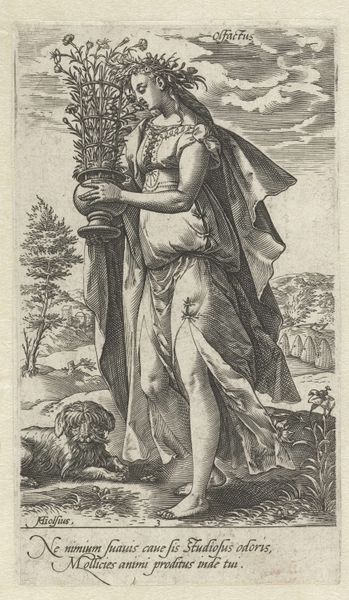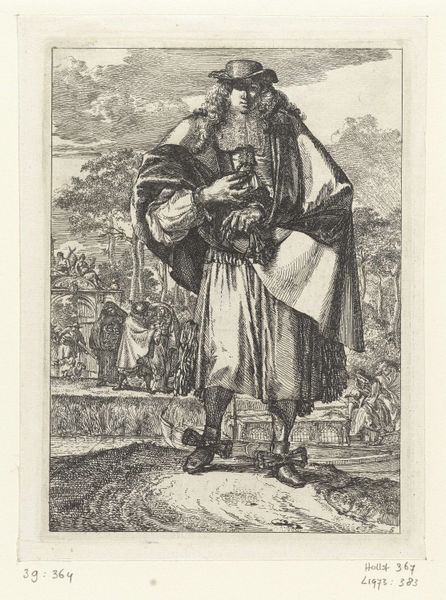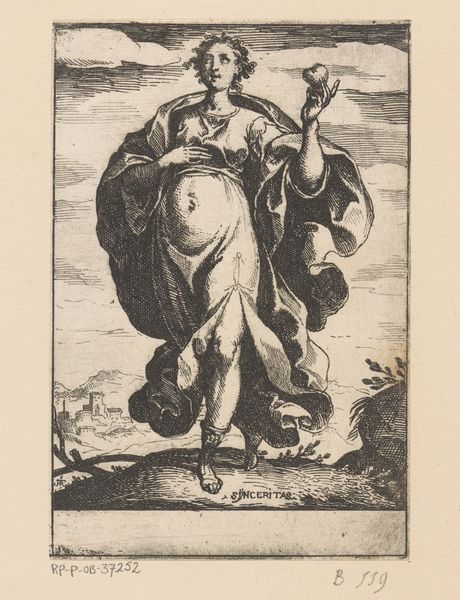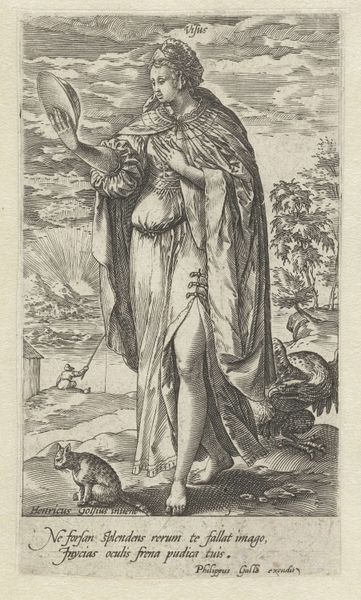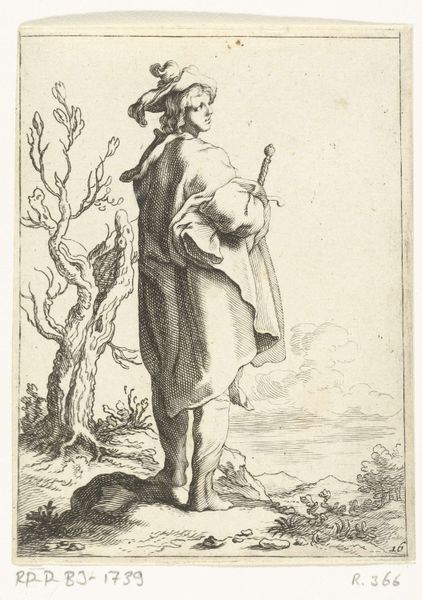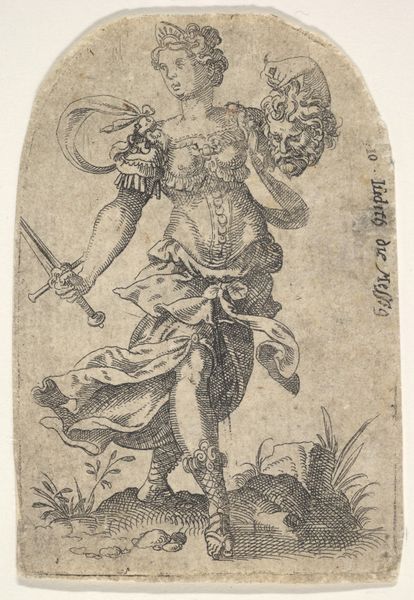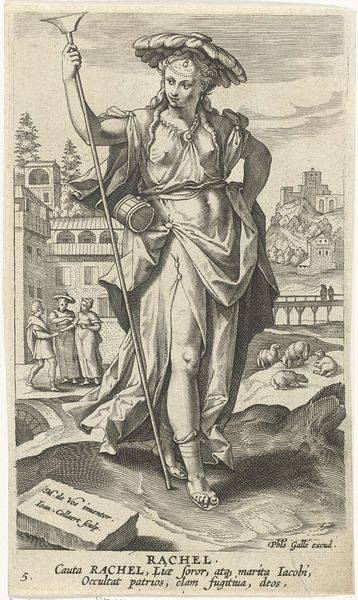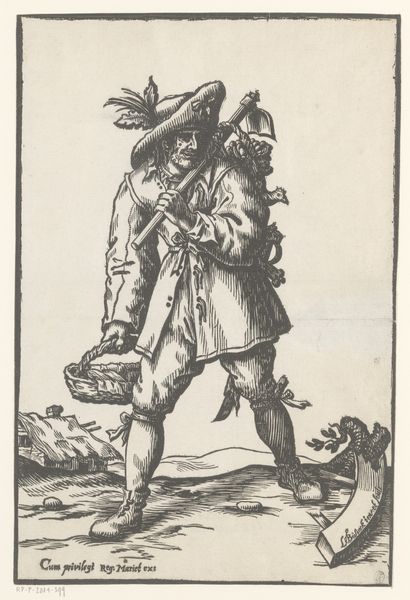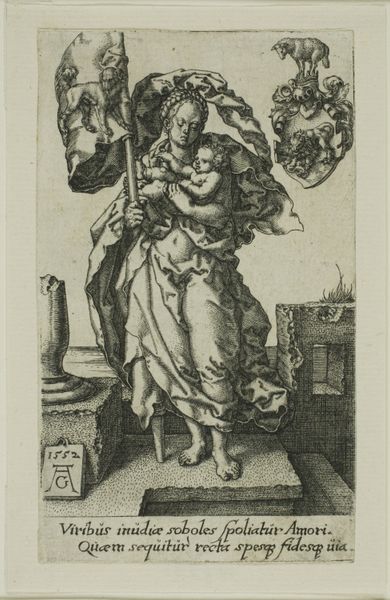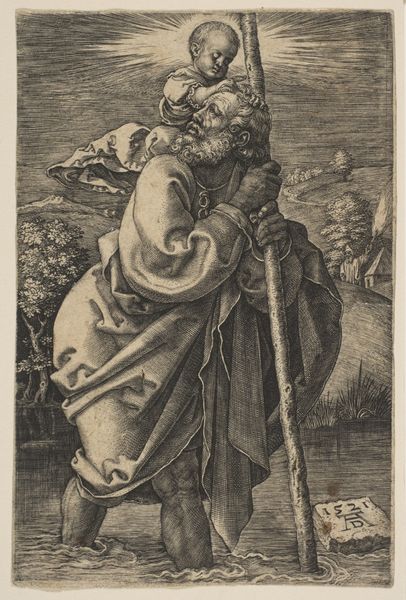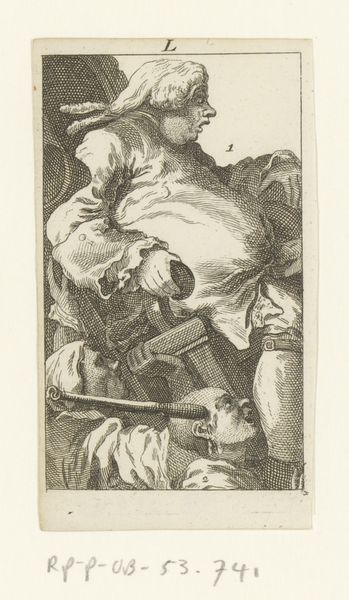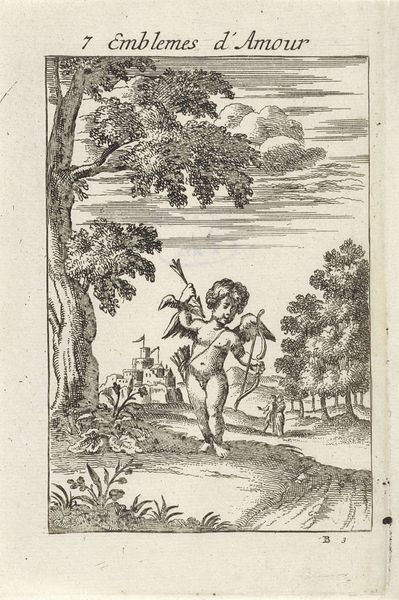
print, engraving
#
portrait
#
allegory
# print
#
mannerism
#
figuration
#
engraving
Dimensions: height 156 mm, width 90 mm
Copyright: Rijks Museum: Open Domain
Curator: Hendrick Goltzius created this engraving, titled "Smaak", sometime between 1576 and 1580. It's currently held in the Rijksmuseum collection. My immediate reaction? It seems both classical and somewhat unsettling. Editor: Unsettling is right. The details are incredible given the limitations of engraving, especially in the draping of her robes, yet that slightly off-kilter balance and that chained monkey also make me wonder what Goltzius wanted to say. What about the material execution? Curator: Considering engraving as a technique, it’s clear Goltzius mastered the burin, a tool that carves lines into a metal plate, likely copper. He’s able to capture light and shadow, creating the illusion of depth through dense cross-hatching, it would be a very demanding process, meticulous labor evident in every stroke. Editor: Absolutely. And contextually, Goltzius was a key figure in Northern Mannerism, and that pursuit of elegance over naturalism certainly comes through here. But I am drawn to exploring the meaning embodied within it. “Smaak” translates directly to taste. Is there a bigger picture that emerges when thinking about how Goltzius fits into his society and time period? Curator: I’d say very much so. This is part of a series of engravings representing the five senses. This figure, Gustus, embodies "Taste," depicted as a beautiful woman tasting fruit. The surrounding imagery—the overflowing cornucopia of harvested foods, and especially that chained monkey that implies subjugation of the primal instinct—points to themes of luxury, indulgence, but also importantly, the refined and elevated consumption of worldly goods by elites. We also can see from her confident expression and the abundant detail on the subject that the picture aimed to evoke ideas about wealth and beauty standards. Editor: The abundance does feel pointed, almost as if he's making a commentary on excessive pleasure and the moral questions linked to wealth. The image offers the question; at what cost? Are those earthly treasures obtained? Curator: Precisely. It's a potent reminder that even seemingly simple representations are deeply interwoven with historical, social, and ethical threads. Looking at it today is a potent lens through which we may see modern day commodity consumption as well. Editor: Indeed. Analyzing “Smaak” truly makes visible to our own consumption-centered existence!
Comments
No comments
Be the first to comment and join the conversation on the ultimate creative platform.
